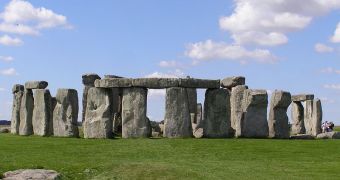A study conducted by scientists at Bournemouth University in England suggests a novel perspective over the ancient Stonehenge's origins.
Unlike previous assessments, the paper published in the Antiquity journal, suggests that in the prehistoric monuments' creating process the big sandstones were placed first and the smaller bluestones afterwards, Huffpost reports.
The discovery causes a total shift in the view over the construction of Stonehenge. While it was previously believed that it must have taken centuries for the monument to be built, it is now revealed that several generations should have been enough to finish it.
“The sequence proposed for the site is really the wrong way around,” said Timothy Darvill, archaeologist from Bournemouth University and co-author of the study.
“The original idea that it starts small and gets bigger is wrong. It starts big and stays big. The new scheme puts the big stones at the center at the site as the first stage.”
Although being one of the world's most famous studied constructions, the real origins, use and meaning of Stonehenge keeps being an enticing mystery.
The British research team began digging in the area in 2008. Although the findings made them support the previously elaborated theory, according to which ancient people's first actions at the site dated at about 5 millenniums ago, when a circular groove was drawn, they came to disagree with the further order of the events.
They show that the large sandstones were erected around 2600 B.C., while the small bluestones were put in their place later, most likely being brought from Wales.
“They sort out the local stuff first, and then they bring in the stones from Wales to add to the complexity of the structure,” explained Darvill.
The new timing helped scientists determine the type of people involved in the monument's creation. It has been deduced that sandstones might have been built by pig breeders from the British Isles, while the bluestones must have been constructed by the Beaker people.
Researchers say the new theory is much clearer and more logical. It “connects everything together, it gives us a good sequence of events outside, and it gives us a set of cultural associations with the different stages of construction,” said Darvill.

 14 DAY TRIAL //
14 DAY TRIAL //